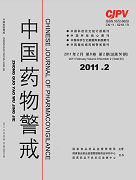|
|
Modern Pharmacology and Toxicology Research Progress of Yangxue Shengfa Capsules
ZHENG Li-na, SUN Rong
2011, 8(2):
108-110.
Objective Pharmacological and toxicological studies on Yangxue Shengfa Capsules are reviewed, in order to provide information for safe, effective and rational use of the medicine clinically. Method Collect, analyze and summarize domestic related literature in recent twenty years. From nourishing blood, hair growth, itching, allergy and other aspects ,pharmacological studies on Yangxue Shengfa Capsules are reviewed; germinal capsule review; From acute toxicity, liver toxicity, effects on the reproductive system and other aspects , the toxicological studies on Yangxue Shengfa Capsules are reviewed. Results Yangxue Shengfa Capsules has the pharmacological effects of nourishing blood, hair growth, itching, allergy and so on, and has curative effect in clinical. But the long-term use can cause liver damage, hepatitis and other side effects. At present less toxic studies on the whole prescription, but only for every medicines in the prescription, especially the liver toxicity of Radix Polygoni Multiflori. Conclusion Yangxue Shengfa Capsules has significant clinical effect, but its long-term use can cause liver damage, hepatitis and other side effects. Systematical pharmacodynamics evaluation on the therapeutic effect, research on the toxicology of adverse drug reaction(ADR) report of Yangxue Shengfa Capsules, pharmacological and toxicological mechanisms and its related material basis still need to be researched deeply.
References |
Related Articles |
Metrics
|
